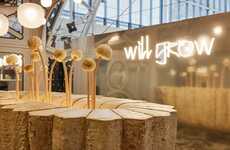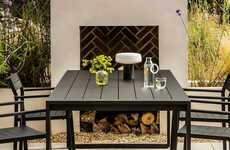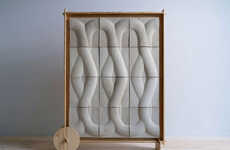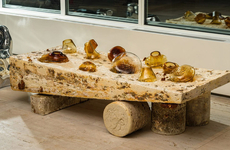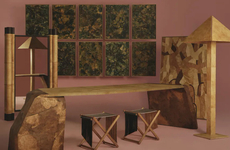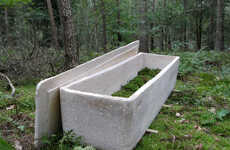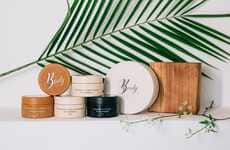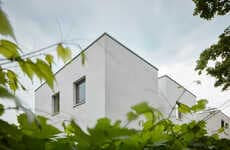
Sebastian Cox’s Mycelium Pendant Lamps Boast a Rustic Design
Elena Rahman — July 29, 2021 — Eco
References: sebastiancox & yankodesign
Sebastian Cox's Mycelium pendant lamps examine the viability of mushrooms as a sustainable material in commercial furniture designs. Rather than manufacturing the pendant lamps, they take between 4-12 weeks to grow. Mycelium is the vegetative part of a mushroom. Designers turn to the fungus for a cheap and vegan alternative to suede with a low carbon footprint.
Sebastian Cox teamed up with researcher Ninela Ivanova to grow the mushroom fibers around scrap strips of willow wood, which acts as the base and fodder for the fungus. Each unique lamp is thus designed in part by nature. A mold is used to create the desired pendant shape and filled with a fungus called Fomes fomentarius. The mycelium and wood fuse together to create a unique composite material.
Image Credit: Sebastian Cox
Sebastian Cox teamed up with researcher Ninela Ivanova to grow the mushroom fibers around scrap strips of willow wood, which acts as the base and fodder for the fungus. Each unique lamp is thus designed in part by nature. A mold is used to create the desired pendant shape and filled with a fungus called Fomes fomentarius. The mycelium and wood fuse together to create a unique composite material.
Image Credit: Sebastian Cox
Trend Themes
1. Mushroom-based Sustainable Products - There is a growing trend in using fungi as a sustainable material to satisfy consumer demands for eco-friendly products. This provides an opportunity for businesses to develop new products that meet the demand for sustainability like furniture, fashion, and packaging.
2. Growth-based Manufacturing Process - The use of a growth-based manufacturing process like what Sebastian Cox used to grow the mycelium pendant lamps could be a disruptive innovation opportunity for industries like furniture, fixtures, and equipment manufacturers looking to reduce production costs and CO2 emissions. Sustainable, cost-effective, and circular manufacturing methods could lead to completely new ways of thinking about traditional products.
3. Nature-inspired Design - With the rise of mycelium as a sustainable and innovative material, there is an opportunity for businesses to utilize nature-inspired or bio-mimetic design in a brand new way in industries such as furniture, fashion, packaging, and more. Think in terms of organic shapes, earthy tones, and natural textures that evoke a close connection to the environment.
Industry Implications
1. Furniture Manufacturing - Innovative furniture manufacturers can leverage the potential of growth-based production processes that incorporate sustainable materials, such as mycelium, to provide their customers with eco-friendly and affordable furniture.
2. Fashion Manufacturing - Sustainable fashion brands can create new products using mycelium as an eco-friendly and sustainable alternative to leather and other textiles. This would help reduce the environmental impact of the fashion industry and meet the growing demand for eco-fashion.
3. Packaging Manufacturing - Packaging manufacturers can create sustainable packaging options using mycelium to reduce the environmental impact of their products and offer customers a more sustainable alternative. Adopting this could revolutionize the way packaging manufacturers operate and lead to a more sustainable future.
6
Score
Popularity
Activity
Freshness


